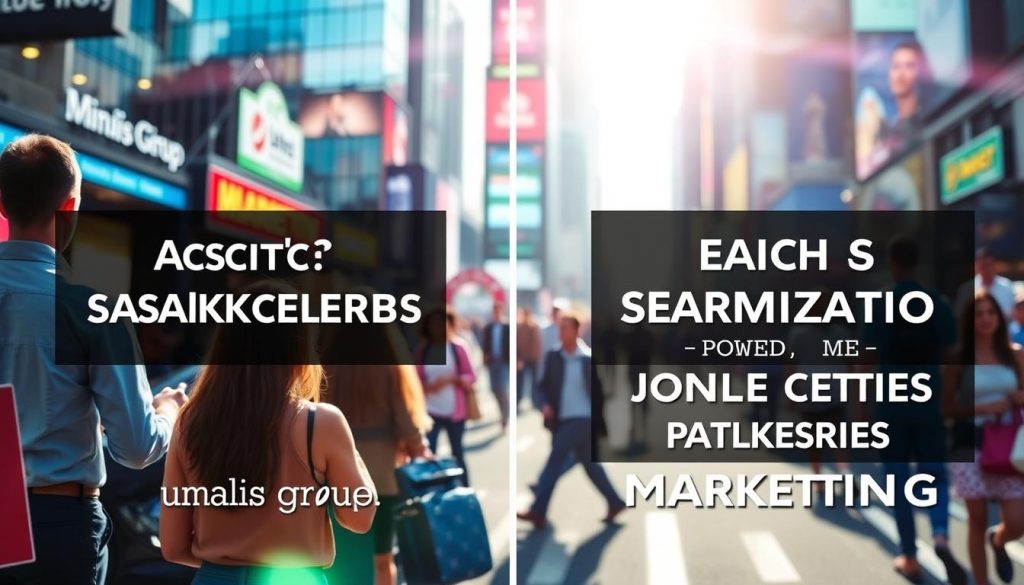Did you know 59% of independent professionals live paycheck-to-paycheck despite contributing $1.3 trillion to the U.S. economy annually? With 34% of American workers now freelancing—a number projected to dominate the workforce by 2027—standing out requires more than raw talent.
The landscape has shifted: 63% of self-employed workers prioritize client diversity over traditional job security. Yet nearly half struggle to cover basic expenses if work pauses for just two weeks. This isn’t about skill gaps—it’s about visibility in an increasingly crowded marketplace.
We’ve analyzed patterns from top-performing independent professionals. The solution lies in strategic relationship-building and systems that attract clients consistently. Your expertise deserves sustainable demand, not unpredictable income swings.
Table of Contents
Key Takeaways
- Freelancers will outnumber traditional employees in the U.S. by 2027
- Client diversification beats reliance on single employers for financial security
- Visibility trumps skill level in competitive service markets
- Effective self-promotion focuses on client outcomes over personal achievements
- Automated systems reduce time spent searching for new projects
What separates thriving independents from those stuck in survival mode? It’s not working harder—it’s crafting approaches that make your services indispensable. Let’s explore methods that build momentum while you focus on delivering exceptional work.
Introduction to Freelance Marketing
France’s independent workforce has grown 145% since 2015, reflecting a global shift toward flexible careers. While this brings freedom, 62% of self-employed professionals report inconsistent income as their primary challenge. Client relationships now determine survival more than technical skills alone.
France’s Evolving Professional Landscape
Paris leads Europe’s freelance growth, with digital services and creative industries driving demand. Unlike traditional employment models:
| Metric | France | Global Average |
|---|---|---|
| Annual Growth Rate | 8.9% | 6.3% |
| Full-Time Independents | 1.2M | N/A |
| Top Industries | IT, Design | Writing, Consulting |
This table shows why understanding local trends matters. Specialized fields like UX design see 22% higher project rates than generalist offerings.
Building Career Longevity Through Visibility
Spending 15+ hours weekly on client acquisition isn’t optional—it’s business reality. Three critical advantages emerge for those who prioritize outreach:
- Recession resilience: 78% of consistent earners maintained projects during economic dips
- Expert positioning: Regular content sharing doubles referral rates
- Pricing power: Visible specialists charge 40% more than silent competitors
One Lyon-based copywriter tripled her rates within 18 months by systematizing outreach. Your craft deserves an audience—strategic promotion ensures it finds one.
Essential marketing strategies for freelancers

Effective promotion for self-employed experts isn’t one-size-fits-all—it’s strategic alignment. The most successful professionals combine immediate income-generating actions with methods that build lasting recognition. This dual approach creates both stability and growth potential.
Two Engagement Models Explained
Active techniques focus on direct client acquisition. Think personalized pitches, responding to job postings, or contacting former collaborators. These methods often yield quick results—78% of professionals secure projects within 72 hours using such approaches.
Passive methods work differently. Content creation, SEO optimization, and nurturing professional networks operate like compound interest. A Marseille-based designer increased inbound inquiries by 140% in six months through consistent LinkedIn engagement.
« Your promotion should feel like natural career development, not desperate hustling »
Real-World Adaptation Patterns
Seasoned professionals recommend:
- Allocating 60% of outreach time to active methods during slow periods
- Shifting to 70% passive strategies when project pipelines are full
- Tracking which combinations yield ideal client profiles
This flexible framework helps avoid burnout while maintaining visibility. The goal isn’t constant activity—it’s creating systems that work while you focus on delivering exceptional results.
Active vs. Passive Marketing Tactics for Immediate Results

Balancing immediate income needs with long-term visibility creates career stability. Professionals who master both approaches report 68% fewer income gaps compared to those relying on one method alone. Let’s examine how to blend urgency with enduring impact.
Direct Outreach That Delivers Projects
Active methods work best when deadlines loom. A Paris-based developer secured 12 contracts last quarter using these techniques:
- Laser-focused pitching: Research decision-makers’ pain points before contacting them
- Call-out precision: Respond to public requests within 90 minutes with tailored solutions
- Platform alerts: Set notifications for keywords like “freelance web designer needed”
One graphic artist tripled response rates by including portfolio samples in her LinkedIn comments. “Generic replies get ignored,” she notes. “Show you’ve reviewed their brand guidelines.”
Sustainable Visibility Through Value Sharing
Passive efforts compound like interest. Consider these results from French professionals:
| Approach | Time Invested Weekly | Avg. Client Lead Time |
|---|---|---|
| Educational posts | 3 hours | 2-4 months |
| SEO-optimized blog | 2 hours | 6-8 months |
| Community networking | 1.5 hours | 1-3 months |
“My calendar filled with ideal clients once I stopped selling and started solving.”
Social media thrives on consistency. Share case studies every Thursday or industry insights every Monday. This predictability builds audience trust while showcasing expertise naturally.
Optimizing Your Online Presence with Website, Blogging, and SEO
Your digital footprint acts as a 24/7 client magnet—when optimized strategically. Research shows websites with clear service pages convert 35% more visitors than generic portfolios. Three elements separate high-performing sites: intentional structure, value-focused content, and seamless user pathways.
Architecting Your Digital Hub
Start with your homepage—it’s your virtual handshake. Within seconds, visitors should grasp:
- Your core services (e.g., “SaaS content specialist”)
- Who you help (“Tech startups scaling to Series A”)
- Proof of impact (“Generated 2.1M organic views in 2023”)
Portfolios thrive on specificity. A Toulouse-based developer landed recurring contracts by showcasing before/after metrics for app speed improvements. Client testimonials with measurable outcomes (“Increased conversion rates by 18%”) build credibility faster than vague praise.
Your About page isn’t a resume—it’s a trust bridge. Share professional turning points that align with client needs. “Why I transitioned from corporate HR to freelance recruitment consulting” resonates deeper than generic career summaries.
“My blog posts answering ‘How do I localize apps for the French market?’ became my top lead source.”
Technical SEO matters. Tools like Moz Local help French professionals optimize for “freelance web designer Lyon” or “B2B copywriter France.” Mobile responsiveness isn’t optional—72% of clients preview sites on smartphones before contacting.
Harnessing Social Media and Content Marketing
Platforms like LinkedIn now generate 80% of qualified leads for savvy professionals who understand value-first engagement. Unlike traditional advertising, social channels let you demonstrate expertise while building authentic connections.
Strategic Platform Selection
Focus efforts where decision-makers gather. French tech startups often scout talent in niche Slack communities, while creative directors browse Behance portfolios. Key steps:
- Use platform search bars to find phrases like « need freelance developer »
- Join industry-specific Twitter/X Spaces for real-time conversations
- Analyze competitor followers to identify potential clients
One Paris-based SEO specialist tripled her project pipeline using targeted LinkedIn outreach strategies that highlighted client ROI.
Content That Converts
Share knowledge that solves immediate problems. Case studies with measurable results (« Increased organic traffic by 200% in 6 months ») outperform generic service lists. Effective formats include:
- Short video tutorials addressing common pain points
- Industry trend analyses with actionable takeaways
- Behind-the-scenes breakdowns of successful projects
« My weekly UX design tips on Instagram Stories became client education tools—they started forwarding them to their teams. »
Consistency matters. Schedule 3-4 weekly posts mixing educational content and client success stories. Track engagement patterns to refine your approach.
Networking and Community Building for More Clients
81% of independent professionals receive project referrals through peers—making relationships your most valuable business asset. Effective connections create ripple effects: every conversation could unlock new collaborations or client introductions.
Where Opportunity Meets Authenticity
Online platforms remove geographical barriers. Join niche Slack groups for real-time industry discussions or share bite-sized expertise on LinkedIn. A Lyon-based translator doubled her client base by engaging in localization-focused communities twice weekly.
In-person interactions build deeper trust. Attend 1-2 industry events monthly, focusing on quality over quantity. Try these approaches:
- Host casual coffee meetups with 3-4 local professionals
- Volunteer to speak at webinars about your specialty
- Collaborate on projects with complementary service providers
« My best clients came from a designer I met at a coworking space. We now refer projects weekly. »
Balance vertical connections (potential clients) with horizontal bonds (peers). Freelancers in professional networks experience 43% fewer income gaps. Remember: genuine curiosity about others’ work sparks lasting partnerships.
Leveraging Email Marketing an
Email remains a cornerstone for client retention, with 74% of professionals reporting higher project renewal rates through strategic communication. Unlike social media algorithms, your inbox offers direct access to decision-makers. Start by building a subscriber list through lead magnets like industry-specific checklists or pricing guides.
Segment your audience based on project types or client industries. A Bordeaux-based copywriter increased repeat business by 40% using personalized nurture sequences. Share case studies relevant to each group—“How we boosted e-commerce conversions for skincare brands” performs better than generic updates.
Automation tools streamline follow-ups without losing the human touch. Schedule quarterly check-ins with past collaborators and share valuable resources between projects. Consistent, value-driven emails position you as the logical choice when new needs arise.
Measure open rates and click-throughs to refine your approach. One Lyon-based designer tripled engagement by testing subject lines against client pain points. Your email list becomes more valuable over time—nurture it with the same care as your craft.
FAQ
How do I start promoting my freelance services effectively?
Begin by identifying your niche and ideal clients. Combine active outreach (like personalized pitches on LinkedIn) with passive strategies such as building a professional website and sharing case studies. Consistency across platforms like Medium or industry-specific forums amplifies visibility.
What’s the difference between active and passive marketing for freelancers?
Active marketing involves direct client engagement—think cold emails, project bids, or collaborating with agencies like Upwork. Passive marketing focuses on long-term brand building through SEO-optimized blogs, a polished portfolio site, or evergreen social media content that attracts clients organically.
Why is a professional website critical for freelancers?
Your website acts as a 24/7 digital storefront. Platforms like Squarespace or WordPress let you showcase work samples, client testimonials, and service details. Include clear CTAs (e.g., “Book a Consultation”) and optimize load speed + mobile responsiveness to reduce bounce rates.
How can freelancers use LinkedIn to attract high-value clients?
Position yourself as an industry expert by sharing insights on LinkedIn Pulse and engaging in relevant groups. Use advanced search filters to connect with decision-makers at companies like HubSpot or Salesforce, and highlight measurable results from past projects in your headline and summary.
What role does SEO play in freelance marketing?
SEO helps clients find you through targeted keywords. Tools like Ahrefs or SEMrush identify search terms your ideal clients use. Optimize website metadata, create blog content around topics like “remote design trends 2024,” and build backlinks via guest posts on sites like Smashing Magazine.
How often should freelancers update their marketing strategies?
Review metrics quarterly using Google Analytics or CRM data. Adjust tactics based on what drives conversions—for example, if webinars generate more leads than static posts, allocate more time to live sessions. Stay agile to adapt to shifts in platforms like Instagram’s algorithm updates.
Can email marketing benefit freelancers with small audiences?
Absolutely. Tools like ConvertKit let you segment even 100 subscribers into niches (e.g., SaaS startups vs. e-commerce brands). Send tailored offers, quarterly industry reports, or client success stories to nurture relationships. A 30% open rate is achievable with compelling subject lines and clear value.
What’s the fastest way to build trust as a new freelancer?
Leverage social proof immediately. Collect video testimonials from past employers, display certifications from Coursera or Adobe, and publish detailed case studies. Platforms like Clutch.co also provide third-party validation that reassures prospects evaluating your services.





